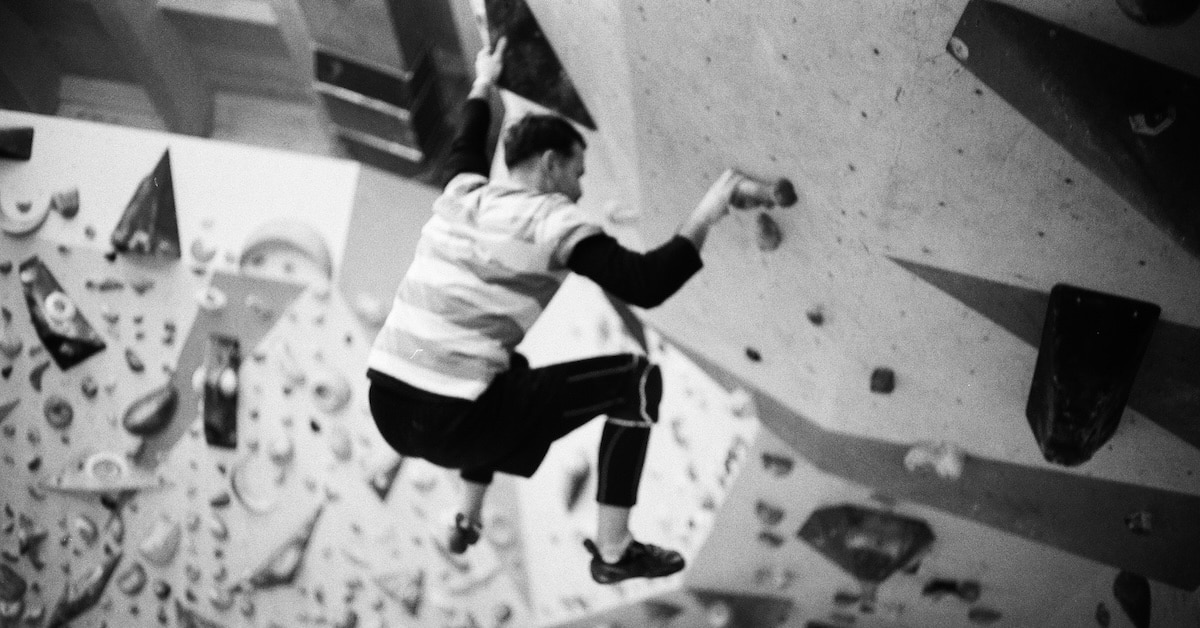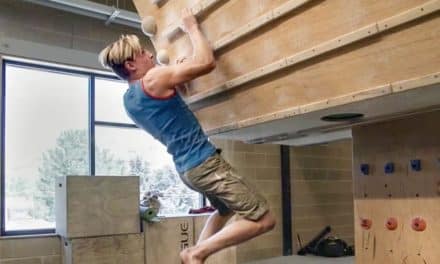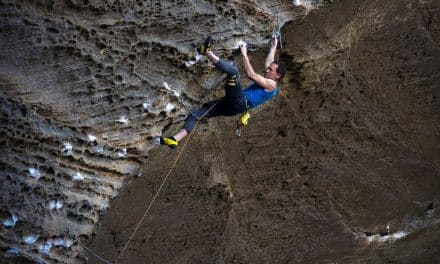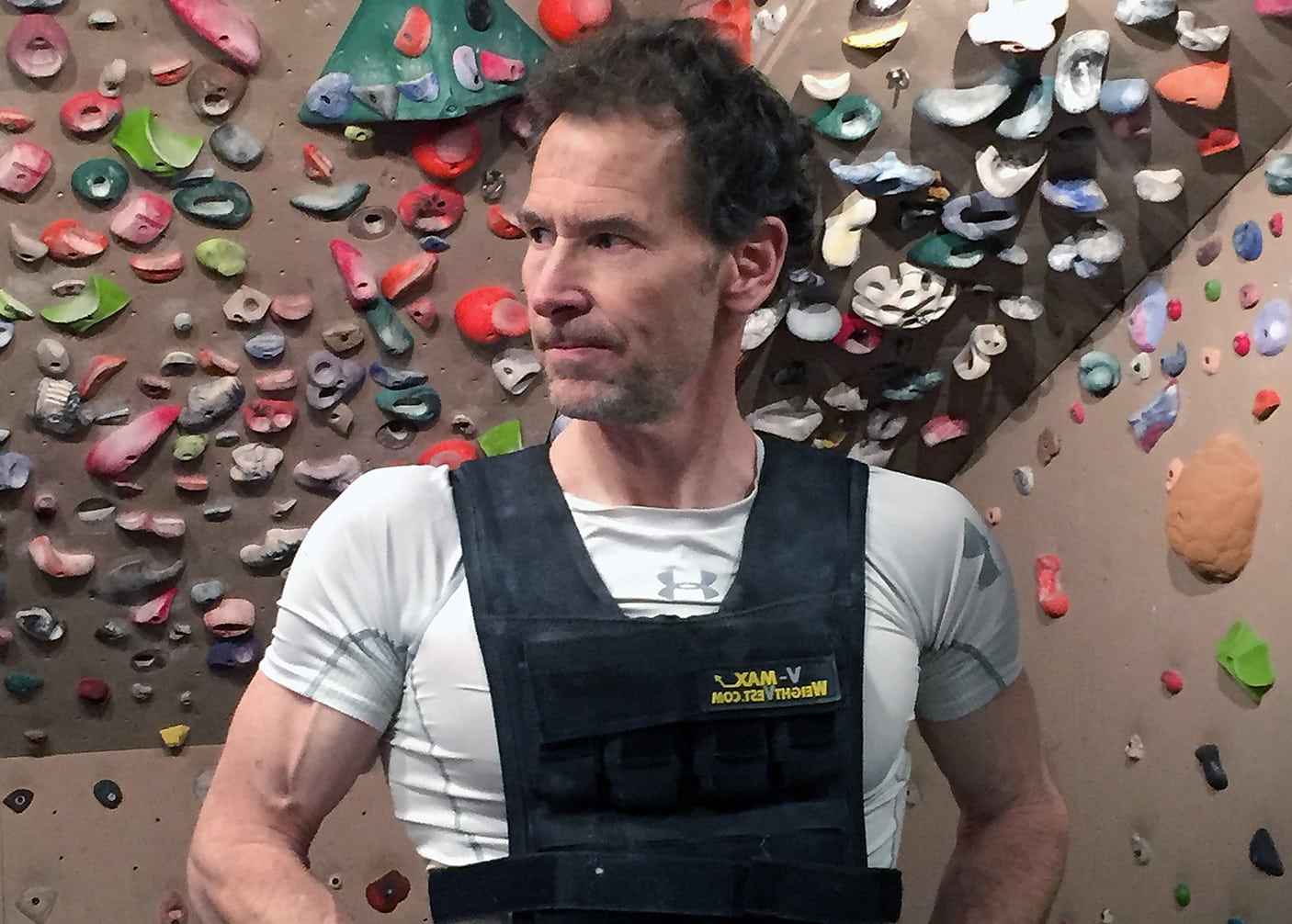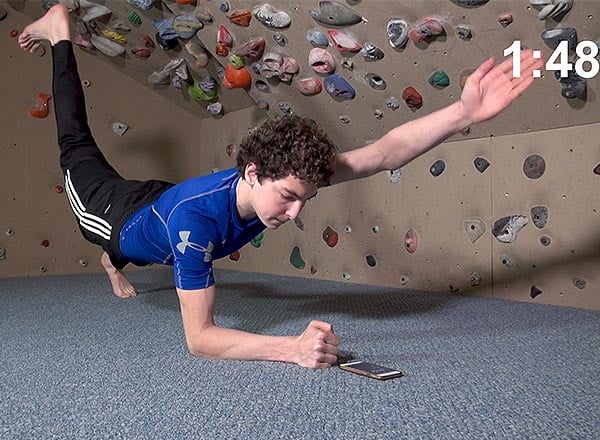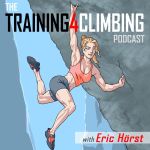Learn how to improve your dynamic output in climbing via power bouldering: a specific approach to limit bouldering that emphasizes big moves on big holds to kick your drive into high gear!
When it comes to training power for climbing, almost everyone turns to the campus board. Here’s a hot take: that’s not actually the most effective way to build power—at least not the kind that’s most applicable on hard routes and boulders. Training the entire body to generate power from tip to toe results in greater gains overall.
No need to swear off the campus board entirely during a power training phase. Just incorporate power bouldering in your weekly schedule as well. You’ll learn to use your feet, legs, and core as sources of power so your arms aren’t left solely responsible for launching you up the wall. You’ll also develop an understanding of how to use that power across many different planes of movement—diagonally, laterally, and even downward—instead of only straight up, and get experience on a larger variety of holds beyond campus rungs.
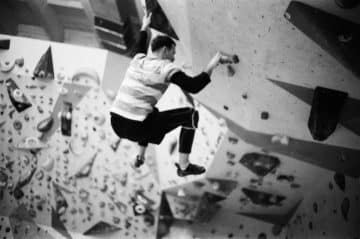
There’s more to power training than the campus board. Try power bouldering on the wall for more effective, full-body power training. Photo by Tanya Pro.
Limit Bouldering Versus Power Bouldering
Power bouldering bears a lot of similarities to limit bouldering. Both styles of training involve working at your maximum capacity in short, intense bursts. They each require plenty of patience as the focus shifts from sending to simply trying hard regardless of the outcome. Limit bouldering and power bouldering also sap your energy stores in similar ways. Rest well in between attempts and between sessions to create the most output on the wall. They’re both much more dependent on quality than quantity of effort. Aerobic fatigue signals a crossover into the realm of power-endurance instead of pure strength or power. Avoid reaching the point of getting pumped!
The key difference between limit bouldering and power bouldering has to do with the style of movement. Limit bouldering focuses more on strength while power bouldering concentrates on—you guessed it—power. Prioritize dynamic movement in your power bouldering sessions. This means limiting lock-offs, minuscule crimps, dainty piano matches, and tension-dependent moves in favor of deadpoints, dynos, lurches, and coordination-dependent moves. Seek out larger holds and bigger throws. Also consider speeding up your rate of movement. It’s hard to summon power at low velocity. Reducing hesitation while power bouldering quickens reaction time and naturally emphasizes dynamic over static movement. Aim to flow directly from one move into the next, avoiding any disruptive waffling in between.
How to Power Boulder
Just like in a limit bouldering session, aim for three to five hard moves at your absolute limit. That’s shorter than most commercial gym boulder problems, so break up climbs well beyond your flash level into pieces and work on one at a time. Or, create your own punchy sequences on spray walls and LED boards. These are especially helpful tools for power bouldering because of how much body size can play into power generation. For example, smaller climbers may not be able to cover quite as much distance as their taller counterparts. Attempting to train on the same problem does a disservice to both parties. Short climbers might struggle to make any moves at all in this scenario while taller climbers might not challenge themselves enough. Personalization allows climbers of all sizes and strengths to recruit the right amount of power for individual improvement.
Rest often, and rest hard. This isn’t the time to sneak in planks or pull-ups between goes. If you’ve ever watched sprinters at the track, you’ll notice that they’re milking the rest intervals for all they’re worth. They jog at paces barely faster than walking so that they can recoup as much energy as possible in time to go HAM when the next set starts. Channel that same mentality here. Each attempt is the climber’s version of an all-out sprint. Rest for three to five minutes between efforts, and cap your session as soon as output ebbs. Resist the urge to give it “just one more go” and save that tenacity for the power-endurance phase. For now, rest will serve you better once you’ve reached your peak.
How Often to Power Boulder
Power comes in even more limited supply than strength. Limit your power bouldering sessions to no more than twice a week, and never twice in a row. Monitor your energy levels and power output very carefully from one session to the next. If you notice a decline in performance that sticks around for more than one session of power bouldering, drop it down to once a week at least until your body adapts to the demand. Intensity trumps frequency here. Multiple mediocre power bouldering sessions don’t have nearly the same stimulus as one potent one. Trust your training enough to rest effectively and embrace less intense alternatives, like quick sending sessions, while you recuperate.
Related Articles:
- Transitioning from Cragging to Training Season
- Limit Bouldering for Building Max Climbing Strength
- “Boulder Campusing” Power Endurance Training for Climbers
- Campus Power Training
- Power Training with the Chest-Bump Pull-Up
Copyright © 2000–2023 Lucie Hanes & Eric J. Hörst | All Rights Reserved.

